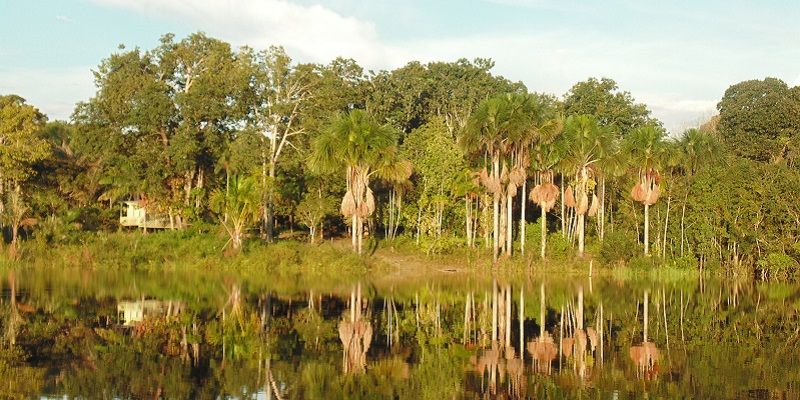
New research reveals that 85 tree species domesticated by pre-Colombian peoples remain common in forests close to ancient settlements.
University of Leeds researchers formed part of an international team of ecologists and social scientists which has found that tree species domesticated and distributed throughout the Amazon basin by indigenous peoples prior to 1492 contributed to modern-day forests.
The research, published today in Science, suggests that Amazonian forest species were significantly influenced by humans.
Lead author Carolina Levis, from Brazil’s National Institute for Amazonian Research (INPA) and Wageningen University and Research Center in the Netherlands, said: "For many years, ecological studies ignored the effect of pre-Colombian peoples on the forests we see today.
“We found that a quarter of Amazonia’s domesticated species are widely distributed in the basin and dominate large expanses of forest. These results clearly indicate that the Amazonian flora is in part a surviving heritage of its past inhabitants.”
The study focused on 85 tree species known to have been domesticated by Amazonian peoples for food, shelter, or other uses over the last several thousand years.
“Research into how these trees are distributed and dispersed helps us create a more complete picture of how the modern Amazon forest came to be and how it might be maintained.”
Study co-author, Dr Tim Baker from the School of Geography at Leeds, said: "The 85 domesticated trees that were the focus of the study included well-known commercial species, such as cacao, açaí, and Brazil nut.
"Brazil nut trees remain an essential part of local livelihoods in the southwestern region of the Amazon.
"Research into how these trees are distributed and dispersed helps us create a more complete picture of how the modern Amazon forest came to be and how it might be maintained."
The researchers found that throughout the Amazon basin these species were five times more common in tree surveys than non-domesticated species.
Domesticated species were also found to be more common and more diverse in forests closer to archaeological sites.
The researchers overlaid data from more than 1,000 forest surveys of the Amazon Tree Diversity Network on a map of more than 3,000 archaeological sites across the Amazon. RAINFOR – a unique research network dedicated to monitoring the Amazon forests and led by the University of Leeds – provided access to data from permanent plots across the Amazon.
By comparing forest composition at varying distances from archaeological sites, their analysis generated the first Amazon-wide picture of how pre-Colombian peoples influenced Amazonian biodiversity.
Study co-author Professor Oliver Phillips, also from the University of Leeds said: "The RAINFOR plots are a rich source of information about the Amazon and this study illustrates the value of investing in long-term studies of tropical forests.
"These locations have been monitored for nearly 30 years and it is exciting to see how the international collaborations and effort invested into tracking Amazon forest dynamics now contributes to addressing this novel question."
Amazon Tree Diversity Network coordinator Hans ter Steege, of the Naturalis Biodiversity Center, said: "The finding promises to heat up a long-simmering debate among scientists about how thousands of years of human occupation in the Amazon basin have influenced modern-day patterns of Amazonian biodiversity, and challenges the view many of us ecologists had and still have of this huge area."
Untangling the complex interplay of historical, environmental, and ecological factors structuring approximately 16,000-species Amazonian tree flora will continue to be a focus of ongoing research.
The question is pressing, since both types of pre-Columbian heritage – archaeological sites and forests with a strong historical component – are at risk from deforestation, degradation, roadbuilding, mining, and other threats.
Flávia Costa, researcher at INPA and a co-author of the study said: "Results of this study have important implications for conservation. We have shown that the southwestern and eastern regions concentrate the most domesticated species, and these are the regions where most forest degradation and loss is occurring.
"Southwestern and eastern Amazonia may not be considered classical biodiversity hotspots, but should be top conservation priorities as reservoirs of high value forests for human populations."
Further information
Image credit: Carolina Levis
The research paper, Persistent effects of pre-Columbian plant domestication on Amazonian forest composition, was published in the journal Science on 3 March 2017. (DOI: 10.1126/science.aal0157)
For any additional information and interviews please contact University of Leeds Media Relations Officer Anna Martinez on a.martinez@leeds.ac.uk or +44 (0)113 343 4196.